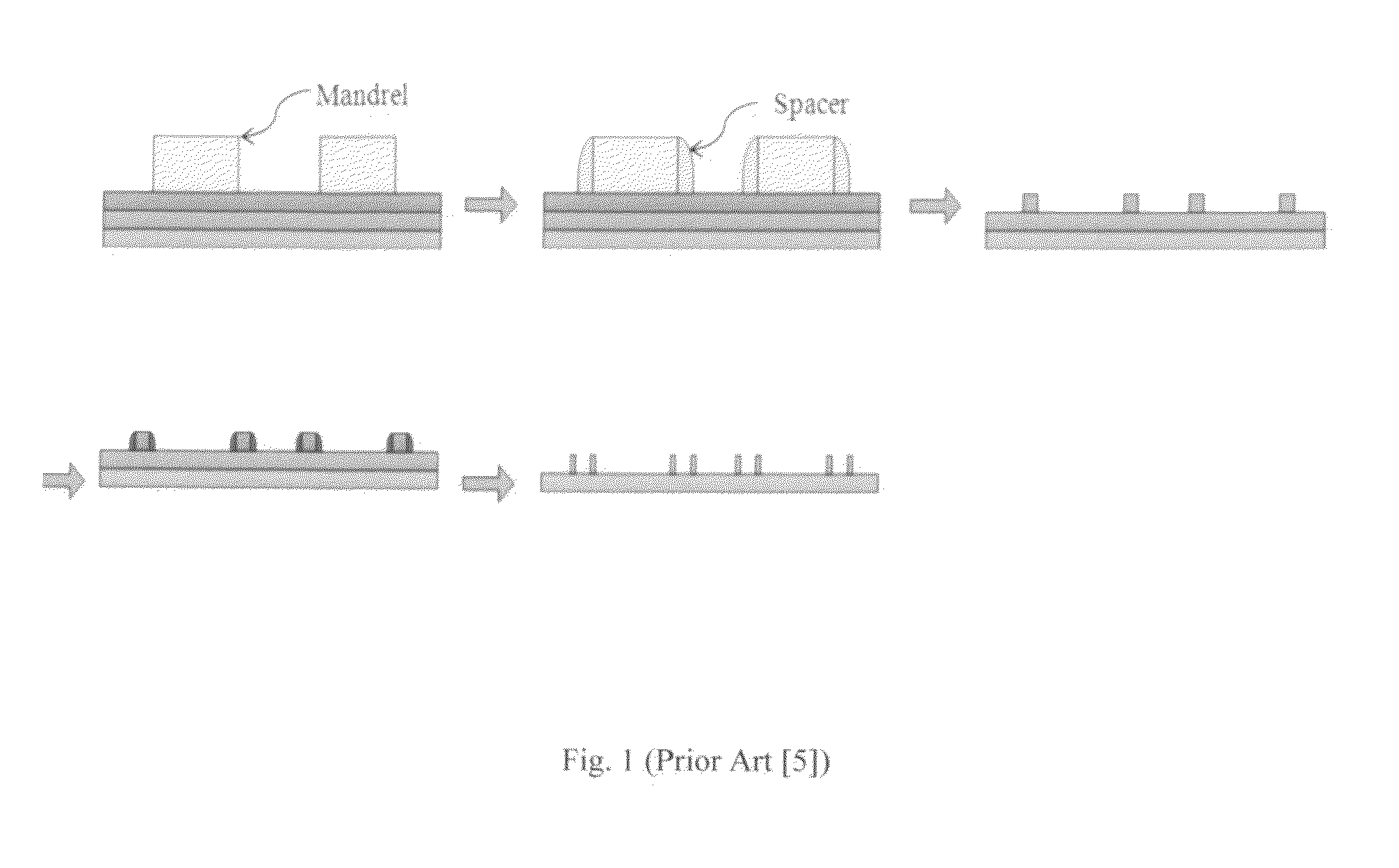Patterning method for IC fabrication using 2-D layout decomposition and synthesis techniques
- Summary
- Abstract
- Description
- Claims
- Application Information
AI Technical Summary
Benefits of technology
Problems solved by technology
Method used
Image
Examples
Embodiment Construction
[0018]A number of novel layout decomposition and stitching techniques are developed in accordance with the invention. In one such process, random 2-D layout features are decomposed into two sets of features: one set of 1-D features arranged in one direction (defined to be X direction) and the other set of 1-D features arranged in the other direction (defined to be Y direction). In general, X and Y directions can be arbitrary and not necessarily orthogonal. These two sets of 1-D patterns are each separately formed by certain SAMP process (e.g., SAQP, SASP, or SAOP Process) using multiple masks (i.e., one mandrel mask and one / multiple cut masks). The type of SAMP process and the mask number to form the X-direction 1-D patterns, do not have to be the same as those to form Y-direction 1-D patterns.
[0019]To better understand and appreciate the invention, a flowchart is shown in FIG. 7 to depict the steps associated with a self-aligned quadruple patterning (SAQP) process according to one ...
PUM
 Login to View More
Login to View More Abstract
Description
Claims
Application Information
 Login to View More
Login to View More - R&D
- Intellectual Property
- Life Sciences
- Materials
- Tech Scout
- Unparalleled Data Quality
- Higher Quality Content
- 60% Fewer Hallucinations
Browse by: Latest US Patents, China's latest patents, Technical Efficacy Thesaurus, Application Domain, Technology Topic, Popular Technical Reports.
© 2025 PatSnap. All rights reserved.Legal|Privacy policy|Modern Slavery Act Transparency Statement|Sitemap|About US| Contact US: help@patsnap.com



